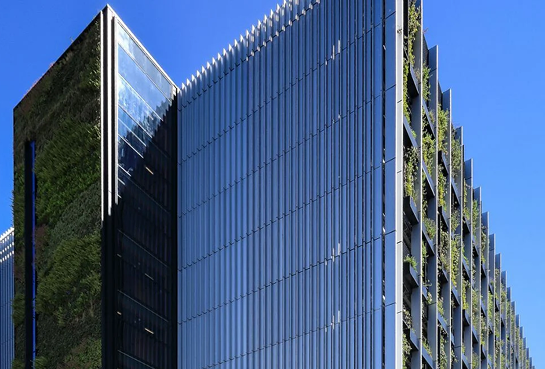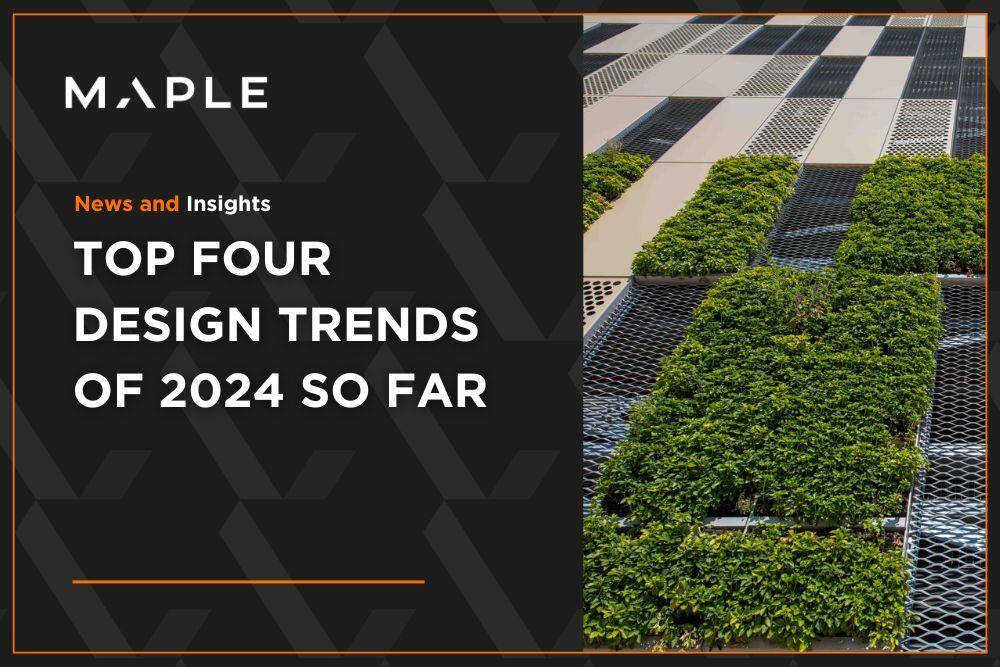
Latest
News
Four of the top architectural design trends in 2024

Topics
- About Maple (100)
- Car Parks (90)
- Office and Retail (47)
- Government (39)
- Rainscreen (36)
- Louvres (30)
- Education (24)
- Residential (24)
- Brise Soleil (22)
- Health (20)
- HSEQ (18)
- Commercial Blinds (16)
- Sustainability (15)
- Data centres (10)
- Pre-Construction services (10)
- Architectural facade (7)
- North West (2)
Even though we’re only halfway through the year, these design trends have been becoming increasingly popular in the construction industry.
Modern technology continues to revolutionise industries across the world, including shaping the environment around us through the advancements made in construction. This has a knock-on effect on the different trends that are emerging as creative possibilities become limitless. Within this article, we cover four of the architectural trends that are dominating the industry so far in 2024.
PARAMETRIC DESIGN
Parametric design describes the design approach in which design parameters are determined by mathematical algorithms. This enables architects to create intricate shapes and forms that were previously unachievable using older methods. Also, it's helping architects to consider factors such as environmental sustainability and urban planning in their design.
SUSTAINABILITY AND BIOPHILIC DESIGN
As well as technology, evolving attitudes towards the wellbeing of the planet has had an impact on façade design. With the government aiming to decarbonise all sectors by 2050, there’s been an increased emphasis on Net Zero and Passivhaus developments. Improvements in the design of certain building elements such as rainscreen cladding can help reduce emissions and reserve energy. Modern rainscreen systems involve an insulation layer to conserve heat and an integrated open-air cavity to promote ventilation, to learn more take a look at our Knowledge Centre article: How can rainscreen cladding help achieve Net Zero goals?
Eco-consciousness has also resulted in a growing popularity in biophilic designs. Living walls offer a range of benefits for the local environment such as improving air quality, cutting energy costs and creating habitats for insects. They also have a positive impact on mental health and well-being by bringing us closer to nature.
FLEXIBLE AND ADAPTIVE SPACES
2024 has experienced a growth in having adaptive spaces as a design feature. These are convertible workspaces that can be transformed into recreational spaces. A good example of this would be Plot 9A First Street in Manchester where we’re currently doing a louvre and brise soleil installation. The outdoor terraces on the 9th floor are being utilised for both recreational and business purposes.
Modular construction is also now a major consideration for architects when designing a building. The use of prefabricated modules provides flexibility and reduced construction time thanks to their ability to be easily assembled, disassembled and reconfigured.
SMART façades
Arguably one of the most exciting emerging trends in 2024 is the integration of advanced technology with architectural façades. Thanks to the development of AI – façades are now being designed to adapt to their environment using real-time data. This includes adjusting shading and ventilation to ultimately improve the efficiency of buildings.
